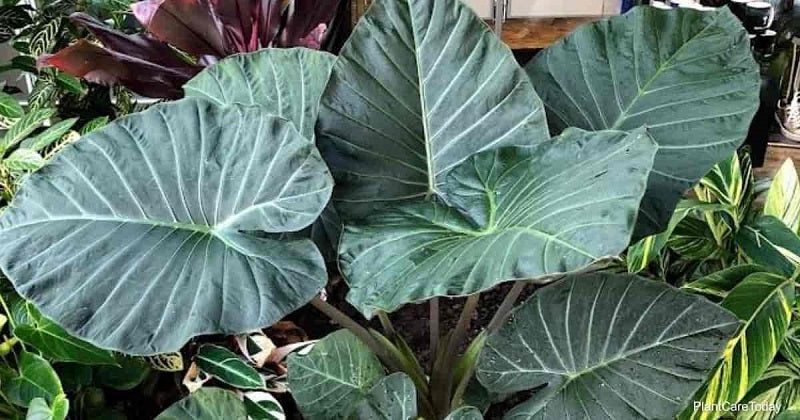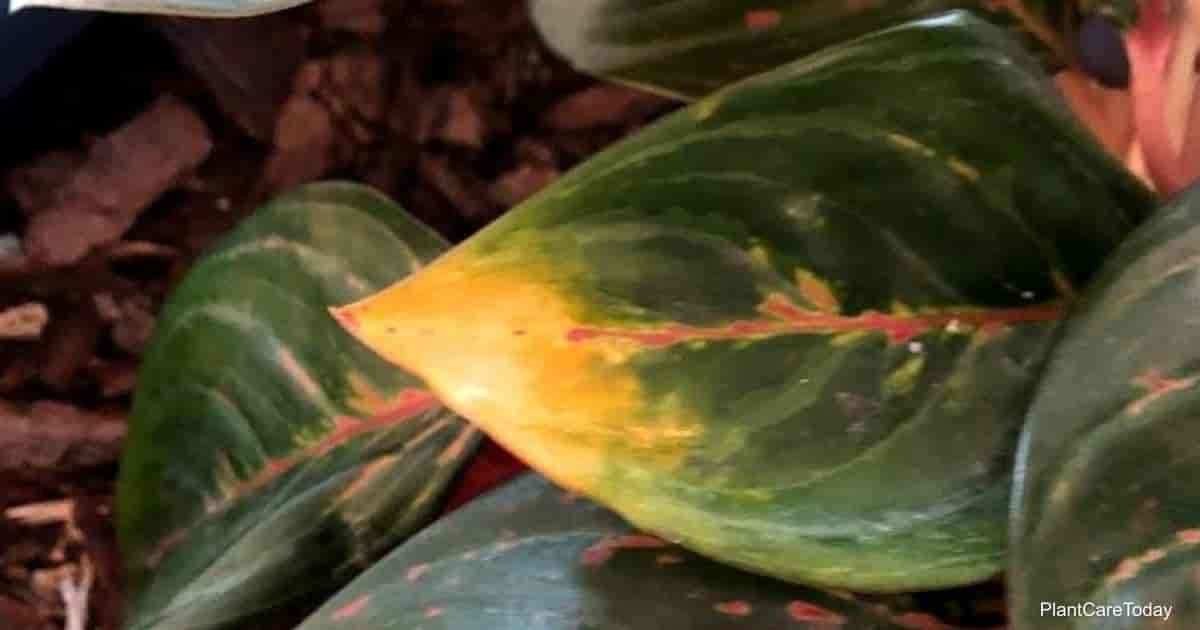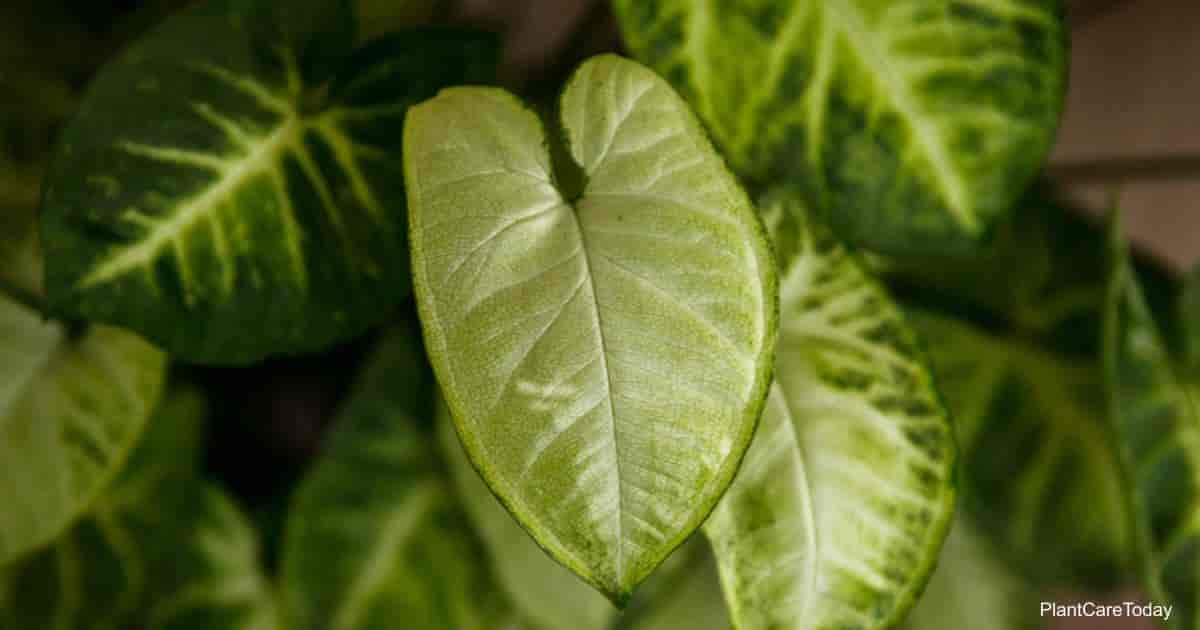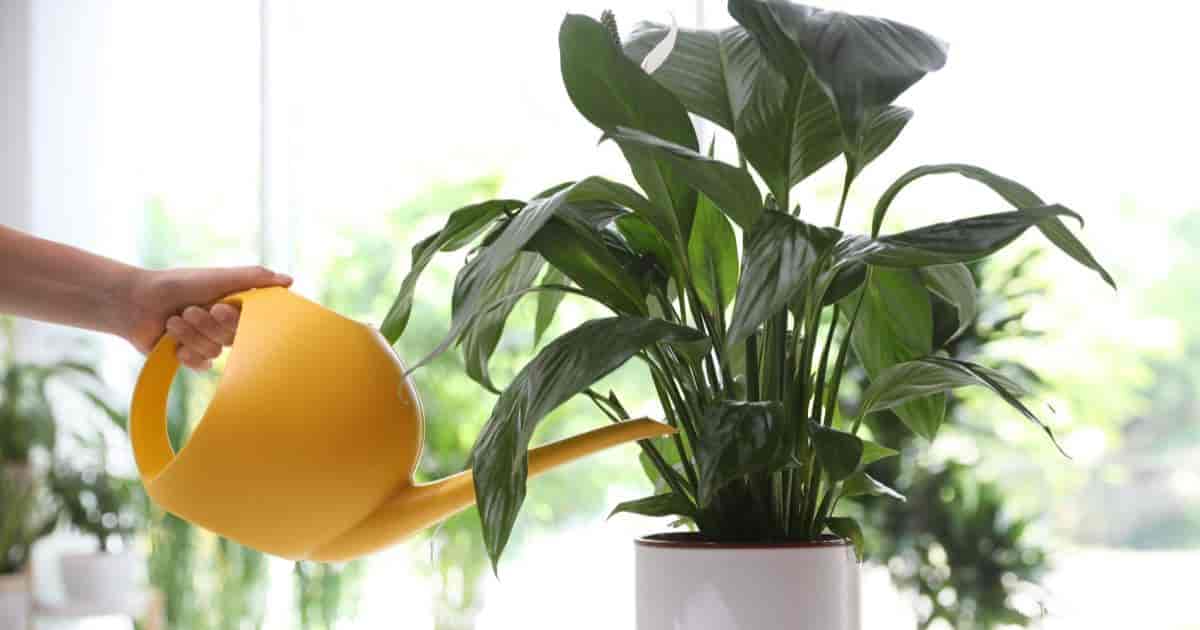You may have heard of the genus of perennial evergreens called Alocasia (a-loh-KAY-see-uh) or elephant ears.
These members of the Araceae family are constantly expanding, with more than 80+ known species and countless Alocasia varieties and cultivars.
Alocasia Regal Shield growing as a landscape groundcover (Kennedy Space Center)
Alocasia Regal Shield is one of those hybrids, making its full name Alocasia odora X Alocasia reginula.
It’s truly a plant of the world, with the first parent coming from Southeastern Asia and Orient, the second from Borneo, the cultivar itself being developed in Florida, and currently considered a native to Africa by many enthusiasts.
Sometimes referred to by Alocasia’s common nickname of elephant ear and sometimes just called regal shield, Alocasia ‘Regal Shield’ makes for a beautiful houseplant and looks equally great in the garden.
Alocasia’ Regal Shield’ Care
Size & Growth
Regal shield is an incredibly fast grower in the right conditions, achieving its adult size of 5′ feet tall in as little as two years.
Some growers have even been able to coax this plant to a height of 9′ feet, although this is pretty rare.
It bears the trademark alocasia leaves on numerous stalk-like stems, each measuring from 8″ to 20″ inches long and bearing a deep blackish-green color.
The plant goes dormant during the winter, at which time it’s normal to see a touch of leaf drop.
Flowering and Fragrance
As with other alocasias, regal shield’s flowers are easily overlooked.
They’re small and white on a tall green, light yellow, or white spadix and sometimes disappear beneath the foliage.
Regal Shield Plant Light & Temperature
Bright, indirect light is ideal for this plant, and it will turn towards the light source, so you will need to rotate the containers occasionally.
Outdoors, dappled sunlight works well, as does morning exposure and afternoon shade.
Be careful not to leave your regal shield in direct sunlight, as the leaves can become scorched as a result.
Likewise, too much shade will have a major impact on the plant’s health over time.
Your Alocasia will love you if you ensure it gets 60% – 80% percent humidity.
This can be accomplished by grouping it with other plants, placing it in a room with a humidifier, or putting a pebble tray under it.
The kitchen and bathrooms have higher humidity, making them both good choices for your Alocasia’s new home.
Be warned. It can be dangerous for your regal shield if the humidity drops below 40% percent.
Keeping the humidity in mind, you can grow your elephant ear outdoors in USDA hardiness zones 9 to 12.
Indoors, aim for a temperature range of 65° to 86° degrees Fahrenheit, with 68° to 77° degrees Fahrenheit being ideal.
Nighttime temperatures can drop to 60° degrees Fahrenheit, but anything below this can lead to dormancy and leaf drop.
Watering and Feeding
The soak-and-dry method is ideal for all Alocasias and will help reduce the risk of root rot or other health issues.
Using the finger test, check to see how far down the soil has dried.
Once it’s dry 1″ inch down, it’s time to water.
Using rainwater or distilled water, (avoid tap water) slowly and evenly pour around the inside of the container until water begins to seep from the drainage holes.
Cut back on watering during the dormant period.
Meanwhile, Regal Shield has also inherited the appetite of other alocasias and will need regular fertilizing during the growing season.
Go with a balanced formula liquid fertilizer diluted to ⅓ strength and feed your plant monthly.
Cut back if the plant begins to grow too fast, and stop feeding mid-fall.
Soil & Transplanting
Being the heavy feeder, your elephant ear will need rich, loamy well-draining soil.
Aim for an acidic soil pH of 5.5 to 7.0.
Add in some aggregate such as perlite to help keep the soil from compacting, but avoid overly heavy or sandy soil types.
A good homemade recipe is 25% percent each of fir bark and perlite, 30% percent coco coir, and 10% percent each of worm castings and horticultural oil.
Alternatively, you can look for a so-called “jungle mix” and amend with a bit of perlite as necessary.
The fast growth of this plant and its heavy feeding habits mean you will be repotting with fresh potting soil every 2 years, preferably in the spring.
If the plant is becoming root-bound, you will need a pot 2″ inches wider.
Use this time to change out the soil completely, discarding the spent soil.
Grooming And Maintenance
While not necessary, your Alocasia will benefit from occasional pruning in late winter to early spring.
Focus on damaged or diseased leaves using sterile shears
Depending on the amount of dust in the air, you will need to use a leaf shine to clean the leaves weekly to monthly.
How To Propagate Elephant Ear
The primary propagation method for Alocasia is through division, and more adventurous growers can propagate the plantlets in water.
Alocasia’ Regal Shield’ is also known to create offshoots from the mother plant, which may be separated and cultivated.
Regal Shield Pests or Diseases
Regal Shield is highly sensitive to cold and has zero tolerance for frost or drafts.
However, they are somewhat heat-tolerant, drought-tolerant, and highly wind resistant.
Aphids are the most common pest, but mealybugs, scale, spider mites, and thrips also infest alocasias.
Root rot is a major threat, and an infestation can lead to powdery mildew or sooty mold.
Other common diseases Regal Shield may suffer from are:
- Bacterial leaf spot
- Leaf blight
- Phyllosticta leaf spot
As with all aroids, the plant contains calcium oxalate crystals, considered toxic to both humans and pests.
Accidental ingestion may irritate the mouth, indigestion, or even kidney stones.
Alocasia ‘Regal Shield’ Uses
Your regal shield is an air purifier, making it perfect for rooms that get a lot of traffic.
Outside, it works great for edging, a ground cover, and as accents for water features.
The stalks, when properly prepared, are a popular stir-fry herb in Vietnamese cooking.
Looking for other types of alocasia, click here
Credit : Gary Antosh (https://plantcaretoday.com/alocasia-regal-shield.html)





